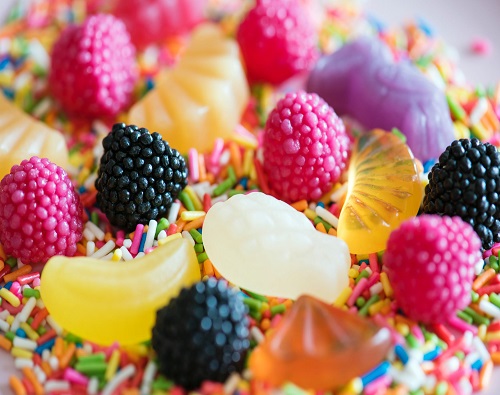Susan Benjamin on being a candy historian and looking at the world through this sugar coated lens.
If there is a childhood super power which I would love to get back, that would be the ability to munch away my favourite candies without a worry in the world. Some of these have become obsolete, and their image pops up every once in a while on my Facebook page, part of a nostalgic post on food memories. There is, of course, this constant buzz around us now about “getting rid of the sugar from our system”, but let us not forget we spent a great part of our childhood negotiating for the same sugar in one form or another. That’s what makes sugar so fascinating. You can run from it, but you cannot hide.
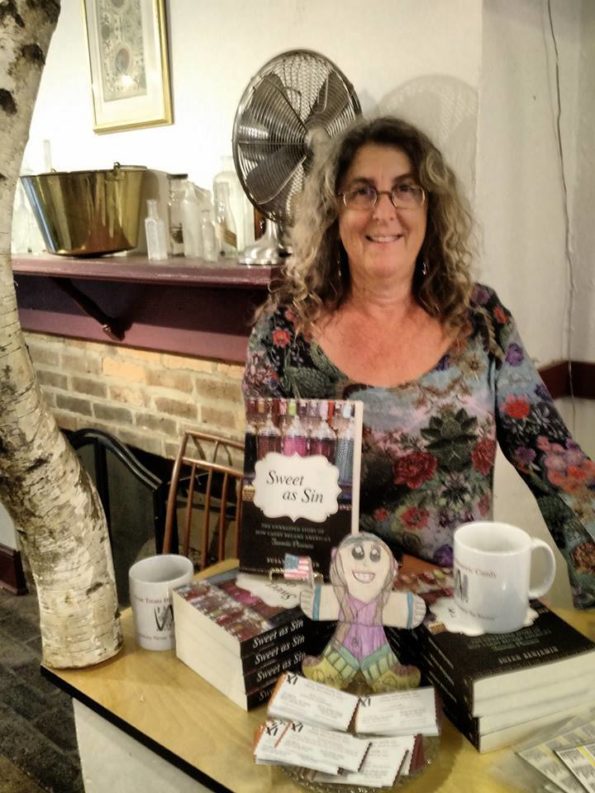
It was this fascination that led me to purchase Susan Benjamin’s book –Sweet As Sin; The Unwrapped Story Of How Candy Became America’s Favorite Pleasure. Make no mistake, the impact of candy in history has been more far reaching than teaching us our first lesson in the art of negotiation. As Benjamin writes very early on in the book -“….candy is deeply embedded in our culture, influencing such things as slavery, the American Revolution, medicine, the birth of the FDA, war rations, marketing, the upsurge of the Industrial Revolution, and the shakedown of Prohibition.” Not really instances we would associate with candy eh??
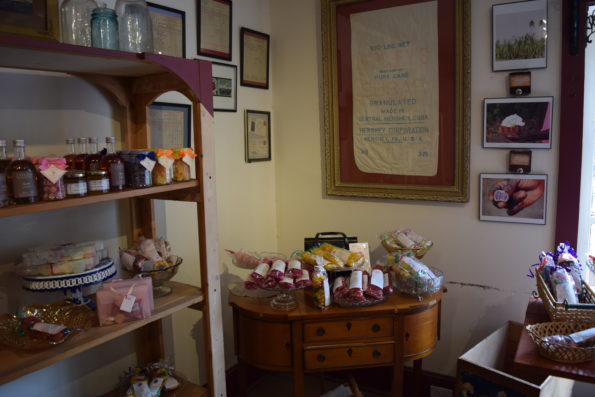
This is Susan Benjamin‘s tenth book. Before devoting all her time to researching the history of candy and sugar, Susan was a journalist, a communications researcher, a Professor and a communications strategist for leading organisations. Her book “Sweet As Sin” was listed one among the “Best Books About Food of 2016” by Smithsonian Mag. She also runs the “True Treats Historic Candy” store- America’s only research based historic candy shop. True Treats is located in West Virginia. I reached out to Susan to know more about candy, history and everything between the two.
This is a book about candy history in America, but when it comes to food history, dig a little deeper, and you find that geography broadens its reach. For example; Susan writes about the origins of Marshmallow (yes, I had to pick that as an example) as follows:
” The Marshmallow plant originated in Europe and West Asia, where the ancients used it to treat coughs and sore throats. The marshmallow was also a sweet that ancient Egyptians boiled with sugar or mixed with honey around 2000 BCE. The result must have been very thick, very sweet, and very hard to make given the stickiness of the plant. When marshmallow appeared in the United States is unclear, but marshmallow candy originated in France in 1850 when confectioners blended the mallow root with egg whites, sugar and water.”
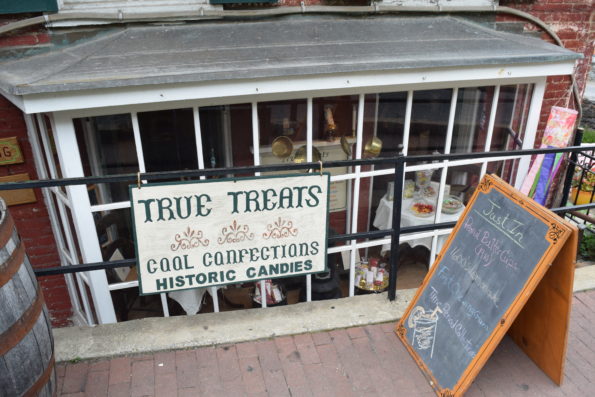
Talking about this global aspect of food history Susan says -“When you look at the use of sugar in the US, what you are really looking at is the history of how the US came about to be what it is today. When we consider who we are as people, we have to consider the spice trade, and we have to consider the colonization around the world by the British. There is also the history of enslavement going back to the Carribean, which was atrocious and sugar cane was right at its centre. So you can see that the story of sugar and candy in the US is essentially the story of everybody.”
Susan shares that while the love for candy was always there, she was catapulted into its history by a simple question. “Somebody asked me a question about candy and I started to research it, and lo and behold here was this really unexplored world. It was unexplored because of reasons which were based on class; I believe that was the reason. In the mid 1800’s candy came around to be in its present form. It was the first time that the working class kids had access to something middle class. This upset people and some terrible things were said about candy, which lasted. There hasn’t been a concerted effort to look at the role of sugar in candy.”
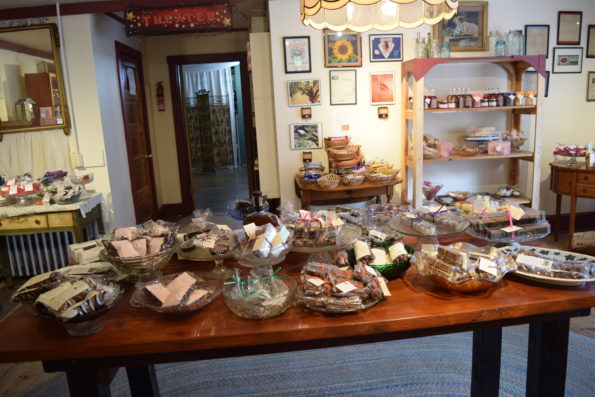
Understanding the history of any food entails understanding how its role and purpose have evolved with time. We might find candy dubious today, but at a certain point, it was considered medicinal.
“A significant change which occurred during the industrial revolution in the US history was marketing. Marketers could now create food quickly that targeted people and pleased them. Earlier candy or foods, in general, were pleasant to eat but they were also purposeful. But now, it did not matter what the purpose was; it mattered that people liked it. This was the beginning of what we now call junk food. In the middle of all of that- candy became candy. Candy was initially used as medicine, and a lot of the big steps came out of the apothecaries. So candy owes its existence as we know it today to the industrial revolution. Its past was in foods that were purposeful and in many cases medicinal.”
As an example, Susan elaborates on the history of a candy called Turkish Delight. “The example that I love the most is The Turkish Delight. The Arabic word for it is Lokum. Lokum was created loosely in the 900’s in the Arabic apothecaries. But it was everywhere. It was used as a medicine partly because of the sugar in it. Sugar had always been considered good for sore throats. So people kept eating it and eating it. A Sultan in the mid 1700’s really loved it and it grew in fame. By the late 1800’s the British started calling it “Turkish Delight” because it sounded exotic and they could market it better. In the meantime, in Boston, pharmacists put a sugar shell on it and sent it to civil war soldiers and that became the jelly bean. Turkish Delight was later the foundation for the gummy candies which were made in Germany. And that’s sort of the story of food. Started as a medicine being healthy, was marketed and ended up being the jelly bean.”, Susan adds with a laugh.
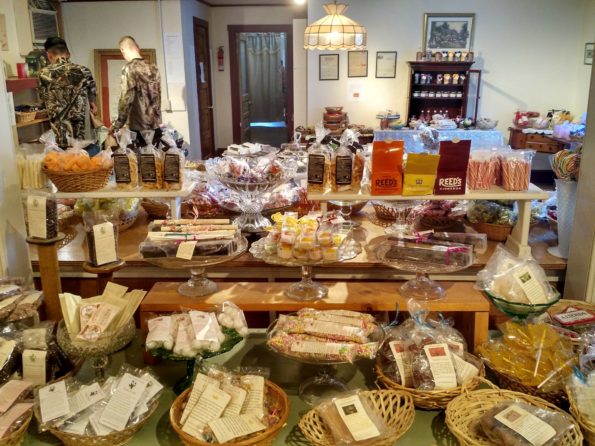
Apart from placing candy side by side with significant events in history, Sweet as Sin also has its share of fun candy facts. Accidental discoveries, stolen recipes, rags to riches stories, and interesting (read a tad bit misleading) old advertisements -you will find a bit of all that in this goody bag. But what makes the narrative more pertinent to the reader, irrespective of where we are located, are the personal perspectives the author includes across this book. These are perspectives from cookbook authors, candy store owners, candy makers and the author’s own memories on the ice cream man. Looking at their lives through the lens of candy, these stories go on to show something that Susan repeatedly states in her interview -“candy is about everybody.” Susan adds -“The best aspect of the story of candy is that it really is about individuals and their deep self-experiences. Growing up with it, having grandparents share it with them and being able to buy it themselves when they were younger. These stories are riveting.”
The best aspect of the story of candy is that it really is about individuals and their deep self-experiences. Susan Benjamin Click To Tweet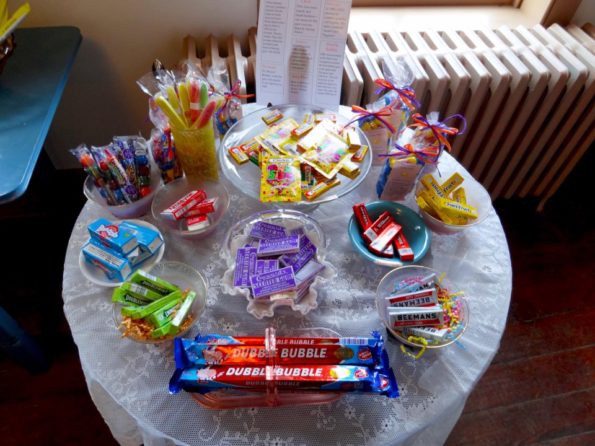
At the end of her book, Susan takes a moment to reflect on candies today, and states that while they are cheaper, they are also “void of cultural meaning.” As we wrap up the interview, Susan says that it would be interesting to see where candy would go in the future, but she hopes that people learn to embrace the fun element of it.
“Candy, in the end, is about fun and about having a good time. We don’t trust things that are fun. We take very few vacations, we don’t value laughter, big dinners or spending a lot of time talking. And candy falls under that umbrella. And we don’t trust it. It’s too bad- we should.”
If you love candies or food history or food, oh forget it- just read “Sweet As Sin”, because it has something in there for all of us. Just like a big bowl full of candies.
For more information visit http://www.truetreatscandy.com/
